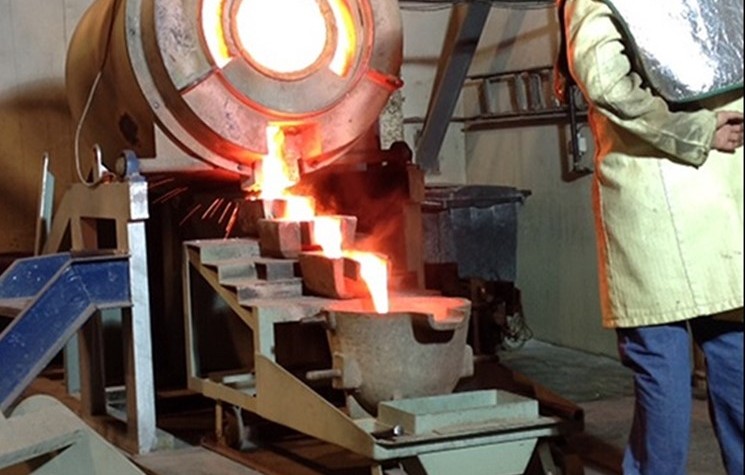Shanta Gold’s Record Production In 2014 Will Be Followed Up By Heavy Downward On Costs This Year

By Alastair Ford
It’s been a rocky ride for shareholders in Shanta Gold over the past few years. The shares at one stage in early 2012 peaked at around 40p, back when gold was still pushing towards US$1,800 an ounce. Now with gold much weaker, at US$1,260 or so, the shares have come back significantly, to the current 10.75p. Along the way it was a white-knuckle ride.
And it may not be over yet, because after a year of record production at the company’s New Luika mine thoughts are now turning to expanding the operation underground. Shanta, it seems, has no intention of sitting still, whatever the vagaries of the gold market
“2015 is a development year”, says Shanta Gold’s Mike Houston. “In 2014 there was a strong operational performance, and costs were in line despite what we consider to have been a weaker fourth quarter. In the fourth quarter obviously the lower ounces produced impacted on unit costs.”
But all told, it wasn’t a bad result. In 2014 the company produced just over 84,000 ounces at all-in sustain costs of less than US$1,000. So, notwithstanding the weaker gold price, there’s still healthy margin at New Luika, and it should grow wider again as the unit costs fall in the current year too.
And longer-term plans are now afoot to make those numbers more sustainable. “During 2014 we were looking at a number of important areas”, says Mike. “We looked below our pits to see if our orebodies extended at depth, and we progressed our underground plans to bankable feasibility level. We then brought in AMC and they suggested we do a bit more drilling and that we could then update on the mining plan.”
As it now stands, Shanta has around 700,000 ounces in reserves open cast and underground, meaning that the life of mine has now been extended from the original three or four years to around seven or eight years from 2015. Foremost in the minds of the Shanta management, says Mike, has been “giving shareholders a longer life”.
On that score, so far so good. Already 2015 looks like it will match up to the success of 2014. “Short-term we are anticipating producing something similar to this year”, says Mike. “We’ve given guidance of 82,000 ounces.”
And as to getting those costs down, Mike points to the appointment of Toby Bradbury as chief executive effective 1st April. “The new chief executive is a mining engineer”, says Mike. “He’s sat on both sides of the fence as contractor and owner. He’ll be targeting somewhere between five and ten per cent in improved efficiencies in our open pit mining.”
“What’s more”, says Mike, “we’ve de-bottlenecked the plant to a large degree by putting an additional tank in. The idea is to move our recoveries up to 91% on the assumption that we put in the budgeted grade.”
Meanwhile, the fall in the oil price is also having beneficial effects on costs. “The open cast contractor is using diesel”, says Mike, “and the generator is using between 800,000 and 900,000 litres of fuel per month. Approximately 50 per cent of that is diesel and 50 per cent is heavy fuel oil. I guess there’s between a US$30 and US$40 per ounce saving at US$60 oil.”
That saving should start showing through in the current quarter, meaning that the next set of numbers should show a significant improvement on the final set of quarterlies last year, always assuming that the gold price holds up of course.
On that score, Mike is sanguine. “From a planning point of view we would be saying to ourselves we’ve got to be able to function comfortably at US$1,200 gold”, he says. As to what the price will actually do, that remains an open question. But in times of uncertainty gold tends to do well. “And you sort of sense that right at the moment there’s quite a bit of nervousness out there”, says Mike. “But the main thing for us is to drive our costs down.”

Comments (0)